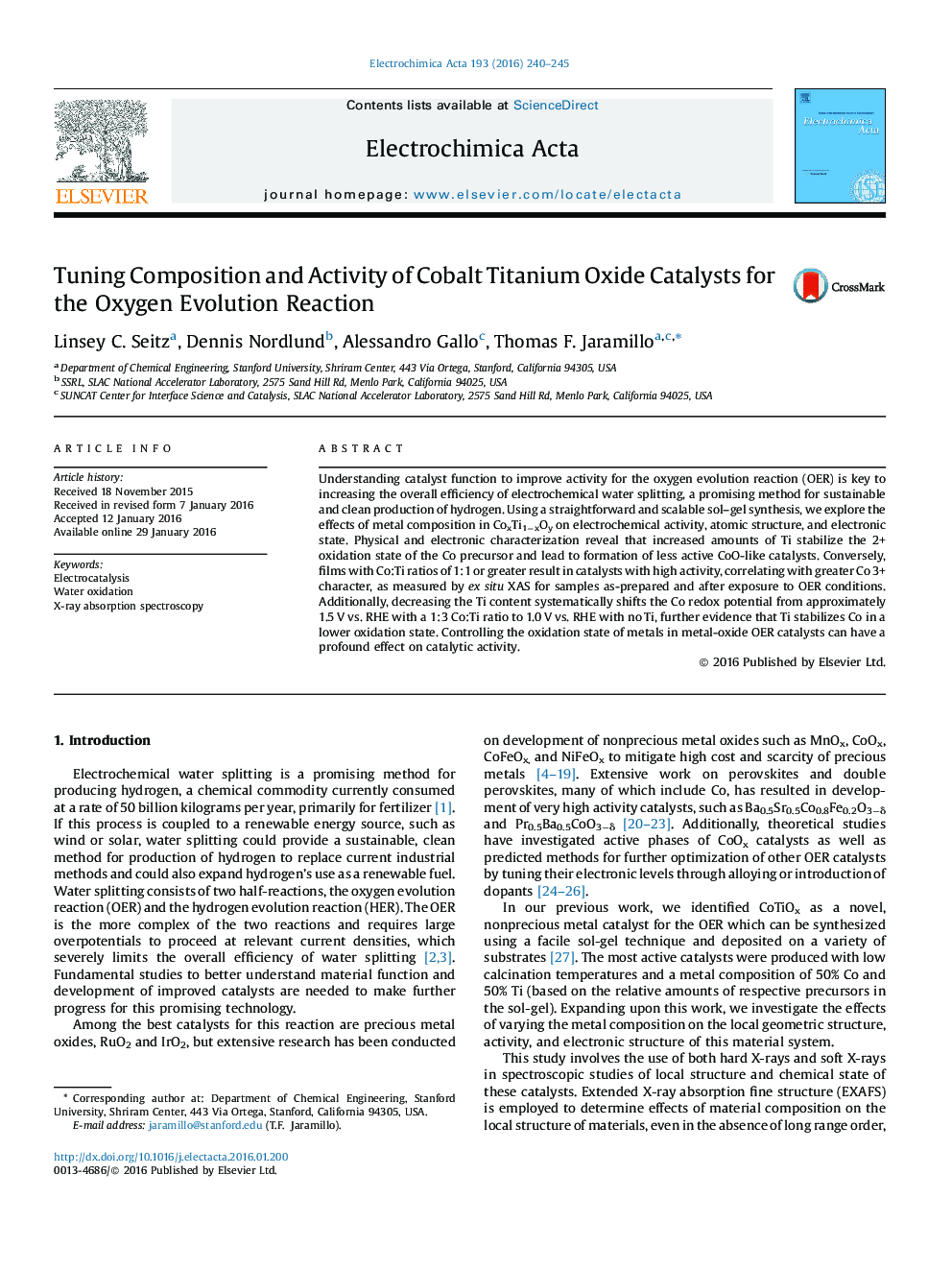| Article ID | Journal | Published Year | Pages | File Type |
|---|---|---|---|---|
| 183223 | Electrochimica Acta | 2016 | 6 Pages |
Understanding catalyst function to improve activity for the oxygen evolution reaction (OER) is key to increasing the overall efficiency of electrochemical water splitting, a promising method for sustainable and clean production of hydrogen. Using a straightforward and scalable sol–gel synthesis, we explore the effects of metal composition in CoxTi1−xOy on electrochemical activity, atomic structure, and electronic state. Physical and electronic characterization reveal that increased amounts of Ti stabilize the 2+ oxidation state of the Co precursor and lead to formation of less active CoO-like catalysts. Conversely, films with Co:Ti ratios of 1:1 or greater result in catalysts with high activity, correlating with greater Co 3+ character, as measured by ex situ XAS for samples as-prepared and after exposure to OER conditions. Additionally, decreasing the Ti content systematically shifts the Co redox potential from approximately 1.5 V vs. RHE with a 1:3 Co:Ti ratio to 1.0 V vs. RHE with no Ti, further evidence that Ti stabilizes Co in a lower oxidation state. Controlling the oxidation state of metals in metal-oxide OER catalysts can have a profound effect on catalytic activity.
Graphical abstractFigure optionsDownload full-size imageDownload as PowerPoint slide
